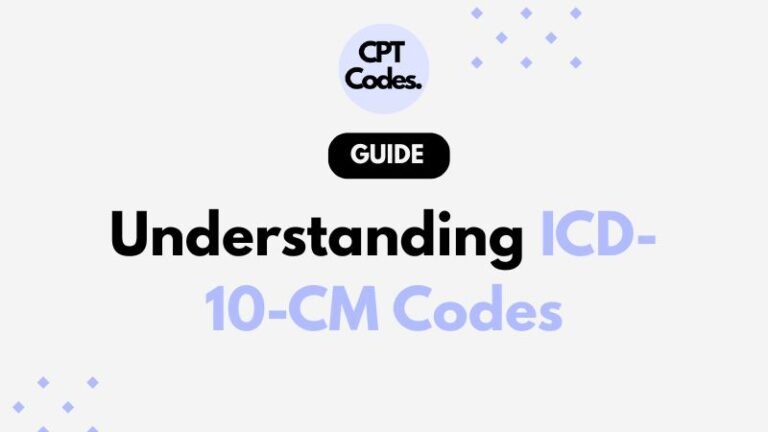ICD-10-CM codes are the backbone of medical diagnosis classification in the United States. They organize every known disease, condition, and health factor into a standardized format that’s used across healthcare systems. But beyond being a massive list of codes, ICD-10-CM is a powerful tool that drives accurate documentation, billing, and public health reporting.
What Is ICD-10-CM?
ICD-10-CM stands for International Classification of Diseases, Tenth Revision, Clinical Modification. It’s the U.S. version of the global ICD-10 system, designed specifically for clinical and administrative use.
In simple terms:
- It’s a diagnosis coding system that represents diseases, symptoms, and health conditions.
- It standardizes how diagnoses are recorded and shared between hospitals, providers, and insurers.
- It ensures consistent communication and reliable data across healthcare systems.
Why ICD-10-CM Codes Matter
Having a single standardized system offers several key benefits:
-
Uniform Reporting and Comparison
Hospitals, clinics, and researchers can track and compare health trends accurately across regions and populations. -
Billing and Reimbursement
Every insurance claim depends on proper diagnosis coding. The right ICD-10-CM code ensures accurate payment and reduces claim denials. -
Public Health Tracking
Governments and agencies use these codes to monitor disease outbreaks, chronic illnesses, and overall population health. -
Clinical and Research Value
Detailed coding supports clinical analytics, quality improvement, and evidence-based decision-making.
How ICD-10-CM Codes Are Structured
Each ICD-10-CM code has three to seven characters and follows a consistent structure:
- The first character is always a letter.
- The next two digits define the main category.
- Additional digits (fourth to sixth) add details such as site, type, and severity.
- The seventh character, when used, indicates encounter type (e.g., initial, subsequent, or sequela).
- The letter “X” serves as a placeholder when the code requires all seven characters but lacks enough detail.
- For example:
S52.501A — where “A” shows this is the initial encounter for a fracture of the radius.
How Many ICD-10-CM Codes Exist?
There are tens of thousands of billable and specific ICD-10-CM codes, updated annually to reflect new conditions and clinical understanding.
Codes are grouped into chapters by condition type. A few examples:
- A00–B99: Infectious and parasitic diseases
- C00–D49: Neoplasms
- D50–D89: Blood and immune disorders
- E00–E89: Endocrine, nutritional, and metabolic diseases
- Z00–Z99: Factors influencing health status (known as “Z codes”)
Z codes are particularly useful — they record social, environmental, or lifestyle factors that affect health, such as homelessness, unemployment, or preventive care visits.
Tips for Accurate ICD-10-CM Coding
-
Be as specific as possible
Avoid using general three-character codes when a more detailed option exists. -
Use the seventh character correctly
Remember that many injury, obstetric, and external cause codes require it. -
Check the effective date
ICD-10-CM is updated every year, typically on October 1 and April 1. Always match your code to the date of service. -
Don’t overlook Z codes
These codes help capture social determinants of health that impact patient outcomes. -
Verify using trusted tools
Use official ICD-10-CM code lookup tools or reputable medical databases to ensure accuracy. -
Stay current
New diagnoses and conditions are added every year — always refer to the most recent release.
Common ICD-10-CM Questions
Q: Do all ICD-10-CM codes have seven characters?
No. Codes can be three to seven characters long. Only some require the seventh character for details like encounter type.
Q: What does “billable” mean in coding?
A “billable” code is the most specific level available and can be used for reimbursement. It doesn’t have further subcategories.
Q: Why are Z codes important?
They describe non-disease factors that influence health — for example, social or environmental issues, or preventive encounters.
Q: How often is ICD-10-CM updated?
It’s updated every year, with new codes and revisions released in October and sometimes mid-year in April.
Q: Who can document Z codes?
In many settings, documentation by nurses, social workers, or other clinicians is acceptable if included in the patient record.
Final Thoughts
ICD-10-CM isn’t just about numbers, it’s a universal language of healthcare. Accurate coding ensures fair reimbursement, consistent data reporting, and better health insights.
To get the most out of ICD-10-CM:
- Stay specific.
- Use the latest version.
- Apply seventh characters and Z codes correctly.
- Keep your clinical documentation clear and precise.
When used properly, ICD-10-CM codes become more than just an administrative task, they become a vital tool for improving patient care and public health.

